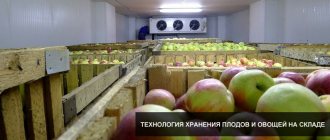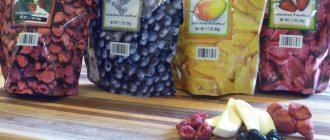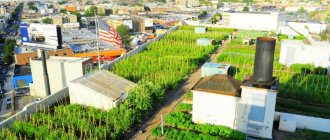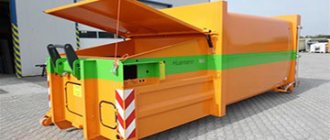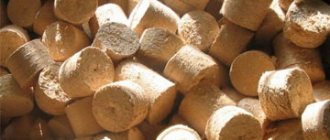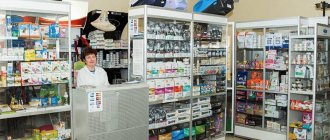Bookmarked: 0
The idea of the business is to freeze fresh vegetables and fruits for their subsequent sale.
In Russia, the market for products such as frozen fruits and vegetables is constantly developing and, judging by expert estimates, is growing by 10 percent annually.
In 2012-2016, sales of frozen vegetables and fruits will grow by 8 percent annually. In the 90s of the last century, these products were imported mainly by foreign suppliers, but currently Russian suppliers have increased the share of supplies in this market, gradually replacing foreign products with domestic ones. A novice businessman can also read the article on the sale of boiled corn.
Main range of frozen products:
- berries and fruits (pears, apricots, apples, cherries, strawberries, raspberries, peach);
- vegetables (pumpkin, tomatoes, broccoli, onions, spinach, cabbage, corn, peas, carrots, potatoes);
- herbs (dill, parsley, rosemary, basil);
- mushrooms (oyster mushrooms, champignons);
Frozen vegetables and fruits are used in the preparation of homemade dishes (vegetable side dishes, mixed vegetables, baked goods), in public catering (desserts, French fries, side dishes), and for the production of confectionery products (cakes and pies).
On video: Arctic blast freezer, business equipment
Before we begin
The profitability of this business largely depends on the assortment and purchase prices of fresh fruits and vegetables. You will not be able to cover all product groups at once, so it is advisable to focus on finding suppliers of cheap raw materials in your region. It is very important to ensure purchases during the lowest prices for certain types of products:
- vegetables;
- fruits and berries;
- mushrooms;
- greens and herbs.
You must have a sufficient amount in reserve not only for the purchase of equipment, but also for the purchase of raw materials.
Study the demand and try to get preliminary agreements with potential buyers in advance. Don't limit yourself to retail chains. Food factories, restaurants and cafes, and confectionery shops need frozen vegetables and fruits.
Agroinvestor magazine
May 2010
Read issue
By processing vegetables, you can earn several times more
Pre-sale preparation of vegetables increases their profitability to 100 percent or more, and the product itself can be sold several times more expensive than raw materials. But so far, few farms are engaged in processing vegetables and potatoes - at least small and medium-sized agricultural firms. Some specialize in growing raw materials, which they sell to processors or sell on their own. Others explain that if the crop is grown on less than 1 thousand hectares, then the investment in its processing does not pay off. Everyone is stopped by the high - several hundred thousand euros - cost of equipment, loans for the purchase of which are also not subsidized.
Viktor Starovoitov, Deputy Director of the All-Russian Research Institute of Potato Farming named after. Lorha calls pre-sale preparation one of the most profitable businesses in potato growing. According to him, the profitability of sales of vegetables and potatoes after washing and peeling can reach 100% versus 30-80% when selling natural potatoes. Therefore, many companies are engaged only in the preparation and sale of vegetables - they do not grow the raw materials themselves, but only purchase them, store them in special terminals and sell them in processed or processed form.
Add value
One of these, which completely abandoned the cultivation of greenhouse vegetables and green agricultural crops in the Moscow region several years ago and built a processing plant with a capacity of 50 tons per day a few kilometers from the Moscow Ring Road. and worth $18 million. The enterprise produces fresh salads and vegetables; the planned payback period for the technological lines is 4-5 years, says Ksenia Kimelman, development director. All products are cleaned, washed, cut if necessary, and packaged in film using a modified gas environment. The main sales channels are food retail, horeca and McDonald's. The latter is the company’s main client, notes Kimelman: its share of sales is 70% in volume terms, with a smaller part - 10% - coming from the horeca segment. Due to the short sales period (5 days), the sales market is limited to the central and northwestern regions, she adds. “Malino” is one of the largest producers of potatoes and open ground vegetables in the Moscow region (cultivates 15 thousand hectares). “We prepare potatoes, carrots, beets, onions and cabbage for sale,” says Dmitry Kobzev, head of vegetable processing. The company's clients are Moscow government structures (state orders), chain stores, factories producing purees, frozen vegetables, ready-made semi-finished products, etc. Malino sells them washed vegetables in bulk and packaged in a net (1.5-25 kg), on a substrate (0.5-1.0 kg), vacuum polymer bags (peeled and/or cut - 0.3-10 kg), as well as peeled boiled. The latter are also sold in polymer bags of similar volume and can be cut.
Processing and processing costs are high, the top manager complains. “It costs about 2 rubles per kg to wash the products,” Kobzev estimates. — For example, in the fall, when the price of raw materials is 5-6 rubles, washing makes up 30% of its cost. Cleaning and vacuumization cost about another 15 rubles/kg.” And cooking peeled vegetables and potatoes is even more expensive - about 70 rubles / kg, he adds. Products processed to a highly prepared semi-finished product have a shelf life of 3 months.
Kobzev assures that the company does not earn additional margins on the preparation of raw materials - simply “the cost of products increases by the cost of its processing.” The average return on sales, he said, is 10%. The reasons for the low margin are high competition among manufacturers of such products and expensive loans for the purchase of equipment, Kobzev thinks. And the imported equipment itself is not cheap, he continues: the simplest machines and lines cost from €100 thousand, and the average price of a set of equipment is €400 thousand. Investments in the technological lines acquired by Malino several years ago have not yet returned. “According to our calculations, the average payback period for equipment will be 4-5 years,” Kobzev estimates.
The majority of market participants surveyed by Agroinvestor, however, say that the margin of vegetables after pre-sale preparation can be several times higher compared to the sale of raw materials. In 2005, Tula entrepreneur Andrei Kazyuchits decided to start processing potatoes (for an article about him, see the April issue of AI). He was dissatisfied with the low margins of natural potatoes and decided to adjust the strategy, focusing on the production of washed, packaged, calibrated and branded ones, which are positioned in the premium segment. In total, the company, according to its website, has 9 types of products, including microwave and low-calorie ones.
To store the crop that the company grows independently (buying 6 thousand tons/year of imported potatoes only in the low season), Kazyuchits in 2009 built a warehouse for 20 thousand tons of one-time storage, of which 3 thousand tons are refrigeration facilities. Of all the sectors of the potato market, this is the most scarce, and the rate of profit is one of the highest, Kazyuchits is pleased. The margin from the sale of washed packaged potatoes can be three-digit, as follows from his words: the cost of a kilogram of potatoes is 3 rubles; delivery to Yekaterinburg costs another 4 rubles/kg, and to Moscow - eight times cheaper, 0.5 rubles/kg. At the same time, the product is sold in chains for an average of 20 rubles per kg. In March, an Agroinvestor correspondent purchased a three-kilogram bag of Tula Niva potatoes for 134 rubles in the Moscow Seventh Continent. (45 rub./kg).
“MORO” from the Leningrad region has been engaged in pre-sale preparation of vegetables and potatoes for 10 years (sorting, calibrating, washing and packaging in plastic bags), which it purchases from farmers from different regions. 250 tons/year are harvested, says Viktor Bessonov, director of production development at MORO. Products from the company's warehouses are delivered to its distribution centers, and from there they are shipped to retailers. Bessonov’s estimate of the cost of equipment is the same as that of Kobzev from Malino - packaging costs € 200 thousand, and the purchase of washing lines increases this amount by 1.5 times. Bessonov did not want to talk about the volume of investments in vegetable processing, their payback and the profitability of this business.
Projects for the future
Not all agricultural producers, especially those cultivating vegetables on small plots, are ready to invest in processing and processing. They say that such projects are interesting in principle, but they prefer to grow raw materials and sell them to processors or sell them themselves. At Samara-based Vega, they are “just thinking about pre-sale preparation,” says executive director Mikhail Kotov. He sells natural potatoes for 7 rubles/kg and is not ready to incur additional costs to create added value for this product. Even packaging in a net (1.5 kg), not to mention processing, increases costs by 30%, he calculated. “Over time,” Kotov plans to supply potatoes to local retail chains, and when implementing such a project, it is no longer possible to do without equipment for washing and packaging, the director admits. Washed and packaged potatoes can be sold to retailers for 9-9.5 rubles/kg, Kotov knows. But Vega is not satisfied with the cost of the equipment: the washing line costs $300-500 thousand. The company is not ready to invest such funds, the top manager summarizes. “It is possible that within the next two years we will introduce equipment for sorting, washing, drying and packaging potatoes,” reflects Valentina Osipova, head of the Niva peasant farm (Moscow region, 50 hectares of potato land). “This could double its price - from 6 to 12 rubles per kg.” She has not made detailed calculations, but is confident that processing will increase the profitability of sales. Even minimal preparation of raw materials on the farm - selecting large high-quality tubers and packaging them in retail nets of 4.5 kg - allows the product to be sold at almost three times the price, at 15 rubles / kg. However, this project is still in question at Niva: it does not plan to supply potatoes to peasant farm chains, it is impossible to buy imported equipment for less than 3 million rubles, and domestic companies do not produce it, says Osipova. Now, if a small technological line for pre-sale preparation could be purchased for 1 million rubles, then it would pay for itself in 2-3 years, the head of Niva thinks.
Novgorod-based Eurokhimservice has 200 hectares of potatoes and 10 hectares of carrots. Despite the fact that washing and packaging add approximately 2 rubles/kg to the selling price, the company is not interested in processing commercial raw materials at the moment, says Chairman of the Board of Directors Igor Lazuko: “Only stores and retail chains with which we do not cooperate require packaging of the product. . And then, they need a mesh with a volume of 1-10 kg. We sell potatoes and carrots to wholesalers - Vologda, Cherepovets and Leningrad food depots.” However, “in the long term,” the possibility of cleaning so-called feed potatoes—small tubers, which the company is now forced to sell to livestock farmers for 1.5 rubles per kg or even throw away for further sale to food factories and canteens—looks attractive, says Lazuko. Such potatoes have all consumer properties and could be sold at 2 rubles/kg more expensive than unpeeled food potatoes, he believes.
"Solana agro-service" (Samara region, 1.5 thousand hectares) grows potatoes and all main types of commercial vegetables. The company sells products to retailers, which require supplies of “a full range of vegetables,” explains Rail Rakhimov, head of the crop production department. The company does not have automated pre-sale preparation and packaging lines; it only plans to purchase a complete set of equipment for the main agricultural crop - potatoes. At the end of 2008, the company already purchased a dry cleaning line and is now packaging tubers in nets of 3, 5, 10 and 20 kg.
The minimum area of land under potatoes should be from 1 thousand hectares - then pre-sale preparation and processing will make economic sense, convinced Pavel Sandrkin, director (Ulyanovsk region). The company looked closely at a set of equipment for washing and packaging, which costs 6 million rubles, and decided that it would not pay for itself: potatoes are grown on only 200 hectares of land. Now the agricultural company packages it and sells it in mesh bags (40 kg) for 8-9 rubles/kg. “Pre-sale preparation in our farm, not counting packaging, consists only of sorting - manually and at a sorting point,” Sandrkin sums up.
Need scale
If a farm produces 1-2 thousand tons of potatoes, then it is profitable for it to engage in pre-sale preparation, supports Sandrkina Starovoitov from the All-Russian Research Institute of Potato Farming. “At the same time, the equipment is, of course, expensive,” he admits. In order for agricultural producers to quickly move from simply packing vegetables in nets to processing, it is necessary to subsidize loans for the purchase of equipment - so that the effective rate is 8-10%, the expert believes. Now such lines can only be purchased on market conditions. So far, less than 2% of the total production volume, which averages 31 million tons/year, is processed in Russia. Potato raw materials are used to make chips, mashed potatoes, etc. Demand for processed vegetables and semi-finished products from them is generated mainly by large retail chains, market participants are supported by Andrey Golokhvastov, general director of Agriconsult (St. Petersburg). Manufacturers need sufficiently significant annual production volumes to interest retailers, he says. “For example, 400 hectares of potato plantings, with an average yield of 30 t/ha, will yield 12 thousand tons of products per year, and vegetables - with a yield of 50 t/ha [and on the same area] - 15 thousand tons,” he says example. “Such volumes are already of interest to retail chains.” Pre-sale preparation, says Golokhvastov, dramatically increases the profitability of vegetable growing. The average price of natural potatoes in 2009 was 8-9 rubles/kg, and in supermarkets the price of a kilogram bag of washed potatoes reached 30 rubles/kg, he compares. True, the markup of processors and stores is not always known. “But I think that an agricultural producer or processor can sell potatoes prepared for sale for 20 rubles/kg,” the expert suggests. According to him, after washing and packaging, the profitability of vegetables and potatoes can increase from 20-25% to 40-50%.
Who does it
According to the All-Russian Research Institute of Potato Farming named after. Lorkha, among the large companies processing and processing vegetables and potatoes are Agrotrade, Belaya Dacha and Ecoovoshch. “They supply products with a high degree of readiness for consumption,” says Viktor Starovoitov. And in Chuvashia, he knows, the construction of a plant for the production of peeled and sterilized potatoes in vacuum packaging with a long shelf life with a capacity of 30 thousand tons/year is being completed (the investor is TAV LLC).
Main risks
There is no particular competition in this direction yet. But there is a serious dependence on the season. Demand for frozen products increases in the fall and remains until mid-spring. The main costs occur during the harvest season. It takes quite a long time before the product is sold. In the absence of regular customers, you will have to have a financial cushion all this time to cover current expenses. Also, it is necessary to provide for a spacious warehouse for storing finished products in proper conditions.
Location
To organize production, you should look for abandoned warehouses or production facilities adapted for food processing. To install a production line, you will need a reliable electrical network. The remaining parameters of the building depend on the technical conditions of the equipment and the requirements of the SES. Many entrepreneurs opt for prefabricated panel buildings, since this option is often much cheaper than searching for the right building and reconstruction.
Proximity of suppliers is important to you. These are farms and large agricultural producers. The optimal location for production is a suburb or regional center.
Equipment
To organize a workshop with a capacity of 300 kg per hour, you will need the following set of equipment:
— Line for preparing raw materials (washing bath, production table, vegetable cutter, digester). —- Average cost – 350,000 rubles. — Blast freezing tunnel – about 3,000,000 rubles. — Semi-automatic line for packaging products. Cost – about 300,000 rubles. — Freezer for storing finished products. The minimum cost is 500,000 rubles. — Refrigerator for delivering products to customers – 500,000-1,500,000 rubles, depending on mileage and capacity.
The total purchase price of equipment with inventory and packaging material to start a business with a productivity of 300 kg per hour is 4,500,000-5,000,000 rubles. With a limited budget, you can save by reducing productivity to 100 kg per hour and manual packaging. A common option is to purchase used equipment or enter into a leasing agreement with the manufacturer of production lines. In this case, it is possible to start with a starting capital of 1,500,000-2,000,000 rubles.
Refrigeration units for storage and freezing of vegetables and fruits
The blast freezer comes in several designs; products in it can be moved using conveyors or placed stationary; after cooling, fruits and vegetables are moved to refrigeration chambers, where they can be stored for quite a long time. From us you can order a project for an industrial refrigeration chamber of the dimensions you need and maintaining the parameters you require.
Industrial conveyor-type blast freezing chamber
In such chambers, the cooled product moves in a refrigeration tunnel using special trolleys and is cooled by uniform blowing of cold air. Due to large losses of cold, this method is energy-intensive and ineffective, since blowing the product is far from the best way to remove heat.
Tile freezers
For fast and efficient freezing, a quick-freezing plate freezer , the design of which contains a number of cooling blocks into which the products are loaded. Such freezers allow you to extract heat using the contact method, which is very effective, since with contact the heat exchange process is more intense. Depending on the need, the blast freezer can be vertical or horizontal. The convenience of this technology is that the finished product is quite compact and folds easily, because it has a regular rectangular shape.
Our company carries out the design and construction of refrigeration chambers and refrigerated cabinets for cooling fruits, vegetables and any other food products. We also carry out a number of other works, maintaining and monitoring existing facilities, modernizing and retrofitting existing systems, in addition to this, we carry out repair work, such as filling the system with refrigerant , repairing compressors and testing valves.
NPP Kholod has been working on industrial cooling systems for many years. Thanks to the many completed projects, we have studied a number of technological processes, and the accumulated experience allows us to quickly and efficiently resolve all emerging issues.
Personnel
An experienced technologist controls the production process. Complex equipment requires the constant presence of a mechanic. If the freezer breaks down, the finished product will defrost; this must be avoided.
The number of workers servicing the line depends on the production capacity and the level of automation. As a rule, 15 people are enough. But during the active harvest and freezing period, many enterprises hire seasonal workers. It is very logical that in winter production activity decreases, therefore, the need for a large number of employees disappears.
Manufacturing technology
Photo by Bonduelle Russia
Description of the entire production process in detail:
- The harvest of vegetables and fruits is collected and delivered. All this adds up to 3 hours.
- Next, the acceptance process is carried out - all vegetables or fruits are checked for taste, color, size, ripeness. The inspection takes place with all production requirements and specifications.
- Vegetables/fruits are cleaned with air. This cleaning removes lighter debris from vegetables, such as petals and pods.
- Vegetables/fruits are washed to remove stones and glass using a stream of water.
- At this stage, the ends of vegetables are cut off, for example, green beans.
- Then the vegetables/fruits are calibrated, that is, small fruits are eliminated.
- Blanching is carried out, that is, gas is removed from the vegetables. The taste becomes more balanced.
- It's time for blast freezing (-30°C). Within a few minutes, the temperature inside the vegetable or fruit reaches -18°C. Thanks to this method of freezing, vegetables and fruits will retain 75-90% of all beneficial vitamins, minerals and other elements. The color and taste will also be preserved, the fruit will not lose its shape and aroma.
- Vegetables and fruits are now stored at -18°C.
- The products are weighed, packaged, and marked with the production date and expiration date.
- Finished packages are packed in cardboard boxes.
- The finished product, which is intended for shipment, is stored at -18°C.
- The finished product is transported at -18°C in refrigerators.
Documents and licenses
To obtain a work permit, it is necessary to draw up a complete production program, including premises, equipment, planned production volumes and quality. The commission must confirm compliance of all parameters with the requirements of the SES and other regulatory authorities.
To certify products, it is necessary to produce a trial batch and provide it to an accredited expert. These documents are issued for a period of one to five years.
To comply with GOST standards, it is necessary to create a production laboratory. The presence of certificates for raw materials does not resolve all issues. You will have to draw up and approve your own technical specifications that meet the requirements for the frozen food industry.
Installation of blast freezing chambers
Our company employs qualified installers who specialize in commissioning refrigeration, freezing and air conditioning equipment. By contacting us, you receive certified equipment for blast freezing of vegetables and fruits, a manufacturer’s warranty, after-sales service and confidence in long-term trouble-free operation. We officially and directly cooperate with manufacturers and developers of devices, we know all the features of installation and operation of equipment for blast freezing. If necessary, we will help you set the settings and choose a mode so that the cameras serve for a long time without requiring repairs.
Vegetables and fruits are represented by a variety of types and varieties, so we adapt installation and settings to the characteristics of the raw materials and the daily production volume. Services for professional installation and configuration of devices will allow you to extend their maintenance-free operation and save on costs.
To clarify the technical characteristics of the cameras described in the catalog, call us or fill out an application on the website.
Profitability
The business is seasonal. The period of declining sales (summer and early autumn) coincides with an increase in the costs of purchasing raw materials, energy consumption for operating equipment and wages for seasonal workers. Sales growth is typical for the winter and first spring months. The situation with profitability can only be analyzed using annual indicators. A profit of 15-18% is considered normal. Payback is achieved in 2.5-3 years.
Marketing
Active work with clients and the constant search for new buyers is the most important factor for success in this business. Having a complete list of technical specifications and certificates available, you can make a commercial offer. In addition to directly contacting potential wholesale buyers in your region, it is important to take part in industry exhibitions and forums and create an attractive company website. It makes sense to organize representative offices in large cities.
